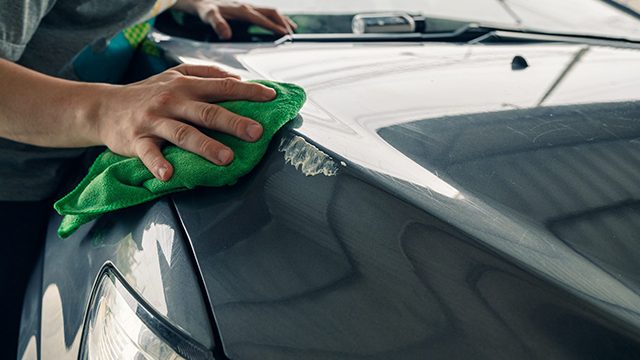This was last November. I used the original 2 wax formula for the exterior including glass and vinyl, complete clean and original for the wheels, and eco tire shine for the tires. My old phone cam was to blame for the blurry effect. Better pictures coming up next. When I start using a car polisher it was just a mere past time than going to a shop and do nothing. Later it became a business.
What Adventure?
I am a father and a teacher and barely have time to clean and maintain my vehicle. Keeping my car clean back from my very first truck over 10 years ago has been a challenge that turned into an adventure and a hobby.
Just like everyone, I started with the usual hose, over the counter shampoo, wax, old rags, lots of water, and about over 2 hours each time i clean my vehicle. Fast forward about 5 years and thanks to the internet forums, I found a No-Rinse product that allows me to use 2 buckets of water and about half the time it takes to clean my ride. I also stopped using waxes and instead used acrylic based polish that seems to be more durable and provides insane levels of shine. I thought my car cleaning adventure is over until I have my own family. With kids, work, and house duties, there’s even less time that I have before. Lately, I am free around midnight when kids are asleep and the routine house things are done. Great, the car is in the garage with barely any room to move around, and cleaning it outside that time is out of the question. This new challenge got me back searching on the internet and found my current line of products, Freedom Waterless Car Wash.
I remember seeing similar products before and decided to skip them. This time, Freedom Waterless seems convincing due to the info and reviews both on and off their site, and ease of communicating with them, even with the owner. After a few inquiries, I ordered a sample and tried it on my current vehicle. Long story short, it works as advertised. The only water used is actually making the towel damp. I sprayed a small section at a time, then a little on the damp microfiber towel, light wipe, then follow up with a dry towel. From my experience, the shine and feel that the original formula left on my ride is comparable to my acrylic polish. The tires were recently treated with the Eco Tire Shine, though I wiped instead of direct spray to get a flatter effect. The wheels were cleaned with Complete Clean first, then the Original formula.
I got 8 weeks out of my first application and my ride stayed shiny despite heavy rains after last year’s Thanksgiving. I only decided to clean again after bees left yellow droppings all over my black ride! I nearly (No-rinse) washed it, but after trying Freedom Waterless on a small section, I decided to go waterless again. I love the products so much that I decided to become a local distributor. Learn to become a detailer so that you can decide whatever products you want.
Now my new adventure begins….





